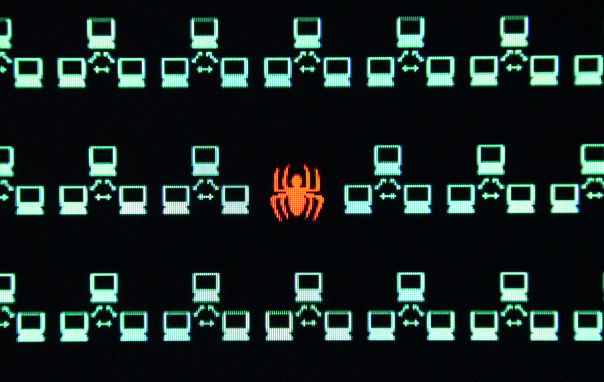Understanding Their Function and SEO Impact

In the ever-expanding digital universe, where billions of web pages exist, it’s impossible for humans to manually keep track of every single page, file, or link. This is where web crawlers come into play.
Also known as web spiders, bots, or simply crawlers, these tools are the silent workforce behind search engines like Google and Bing. They systematically browse the World Wide Web, scan websites, and collect data, enabling search engines to provide relevant search results to users.
In this comprehensive guide, we will explore web crawlers, their function, their importance in the search engine market, and some of the challenges and opportunities they present.
We’ll also cover different types of crawlers, including malicious web crawlers, and how website owners can manage crawler activity.
Additionally, on the first page, we’ll introduce you to how LinkLumin can help businesses optimize their websites to be more crawler-friendly, enhancing their visibility in search engine results.
Table of Contents
- What Are Web Crawlers?
- How Do Web Crawlers Work?
- Types of Web Crawlers
- The Role of Web Crawlers in SEO
- Managing Web Crawlers on Your Website
- Common Challenges and Issues with Web Crawlers
- How LinkLumin Can Help You Optimize for Web Crawlers
- What Are Web Crawlers?
Web crawler or a web spider is an automated program, used by search engines to index and organize information across the World Wide Web. Their primary function is to discover and index new and updated content from websites, making it accessible and searchable. When a user queries a search engine, the indexed information is used to generate relevant results.
Key Functions of a Web Crawler:
- Scanning Websites: Crawlers systematically browse websites to gather information such as text, images, and links.
- Indexing Content: Crawlers index web content to make it searchable. This process involves creating entries for each search engine’s database page.
- Following Links: Crawlers move from page to page by following links, helping them discover new and updated content.
Web crawlers are essential for building search indexes that power engines like Google, Bing, and Yahoo. Maintaining an extensive website data database allows these platforms to deliver relevant and up-to-date results to users.
- How Do Web Crawlers Work?
The crawling process begins when a web crawler is given a starting point, known as a seed URL. From there, the crawler scans the page, extracts data, and follows any links to other pages, repeating this process to multiple processes to build an index of the web.
Step-by-Step Web Crawling Process:
- Seed URL Initiation: The crawling process starts with a list of URLs (seed URLs). The crawler accesses each URL and downloads the content.
- Parsing and Data Extraction: The crawler analyzes the downloaded page, extracting relevant data such as links, images, and text.
- Following Links: The crawler follows the links on the page to discover additional pages. This process helps the crawler traverse a large portion of the web.
- Indexing: The extracted data is processed and stored in a search engine’s index, allowing it to be used in search results.
- Regular Crawling: Web crawlers revisit sites periodically to check for updates, ensuring the search engine’s index remains current.
Incremental vs. Complete Crawling:
- Incremental Web Crawling: This method updates only the parts of the index that have changed since the last crawl. It’s more efficient for large sites with frequent updates.
- Complete Crawling involves re-indexing an entire website or a large web section. It is less common due to the high resource demand.
Google Search, for instance, uses a combination of both methods to ensure its index remains current and comprehensive.
User-Agents and Crawl Delays:
User Agents: Each crawler has a unique user agent string that identifies it to web servers. This helps website owners understand which bots are accessing their sites.
Crawl Delay: Some sites specify a “crawl delay” in their robots.txt file to control how often a crawler can access their pages. This helps prevent server overload.
Types of Web Crawlers
There are several types of web crawlers, each serving a different purpose. Understanding these types can help website owners and SEO professionals manage how their sites are crawled and indexed.
Search Engine Crawlers
These are the most common crawlers used by search engines like Google, Bing, and Yahoo to index web pages and provide relevant search results.
Malicious Web Crawlers
Malicious web crawlers are designed to extract sensitive data from websites without the owner’s permission. These crawlers can harm a website by overloading the server, scraping proprietary information, or bypassing security measures.
Web Scrapers
Web scrapers are similar to crawlers but are primarily used for web scraping, which involves extracting large amounts of data from websites. Web scraping can benefit market research, competitive analysis, data mining, and aggregating data from multiple sources.
Incremental Web Crawler
These crawlers focus on updating specific portions of a search engine’s index rather than crawling entire websites. They create entries to update the search engine’s index with the latest changes.
Vertical Search Crawlers
These crawlers focus on specific verticals, such as academic research, product listings, or job postings. Niche search engines use them to gather specialized data.
Web Spiders for Analytics
Tools like Google Search Console use these crawlers to help website owners monitor their sites’ health and performance. They scan for issues like duplicate content, crawl errors, and mobile usability.
Managing Different Web Crawlers
Most website owners manage crawler activity through the robots.txt file, specifying which site parts can be crawled. It’s also possible to set permissions to crawler finds to block certain images, sections, or even entire websites from indexing.
- The Role of Web Crawlers in SEO
Web crawling is at the heart of SEO. It determines how your site is indexed and ranked in search results. Understanding how most web crawlers work can help you optimize your site to be more accessible and attractive to them.
Importance of Web Crawlers in SEO:
- Indexing New Pages: Web crawlers ensure that new content is added to the search index, making it discoverable by users.
- Crawling and SEO: Effective Crawling allows search engines to understand your site structure and content, helping you rank for relevant keywords.
- Duplicate Content: Crawlers can identify duplicate content, which may negatively impact your SEO. Using canonical tags and proper URL structures can mitigate this.
- Managing Crawl Budget: Large websites must manage their “crawl budget,” or the number of pages a crawler will index in a given period. Prioritize high-value pages to ensure they are crawled first.
Tools to Optimize for Web Crawlers:
- Google Search Console: This tool provides insights into how Google crawls your site, including errors, coverage, and mobile usability.
- Bing Webmaster Tools: Similar to Google Search Console, but for Bing. It helps manage how Bing crawls and indexes your website.
- SEO Plugins: Tools like Yoast SEO and All in One SEO for WordPress can help optimize your site’s structure and content for better Crawling.
Managing Web Crawlers on Your Website
Website owners have several tools to manage how crawlers interact with their sites. This is crucial for protecting sensitive data, ensuring efficient Crawling, and preventing server overload.
Robots.txt File
This is a simple text file placed in a website’s root directory. It tells crawlers which pages they can and cannot crawl. For example, if you don’t want a crawler to access a specific directory, disallow it in the robots.txt file.
Meta Robots Tags
These are HTML tags that provide specific instructions to crawlers about individual pages. They can block indexing, follow links to crawl pages or set crawl delays on a page.
Crawl Delay
Specifies how frequently a crawler can request a page back from the web server. This is particularly useful for large sites that want to control server load.
IP Blocking
You can block specific IP addresses or ranges from accessing your site to handle malicious web crawlers or unwanted web scrapers.
Benefits of Managing Web Crawlers:
- Protect Sensitive Data: Prevent crawlers from accessing sensitive sections of your site.
- Control Crawl Budget: Ensure crawlers prioritize high-value pages.
- Reduce Server Load: Prevent server overload by controlling how often crawlers access your site.
Common Challenges and Issues with Web Crawlers
While web crawlers are essential for indexing and retrieving relevant results, they also present several challenges.
Overloading the Server
Too many crawlers accessing a site simultaneously can increase server load, slowing the site for human users.
Duplicate Content
Crawlers may index duplicate versions of the same content how many pages, negatively impacting SEO. Proper use of canonical tags and redirects is essential to manage this.
Malicious Web Crawlers
Malicious web crawlers can scrape sensitive data, bypass security measures, and significantly harm a website’s performance and integrity.
Crawl Errors
Crawl errors occur when a web crawler cannot access a page. Common causes include broken links, server errors, or incorrectly configured robots.txt files.
How to Address These Challenges:
- Monitor with Google Search Console: Use it to identify and fix crawl errors.
- Update Robots.txt Regularly: Keep your robots.txt file updated to manage crawler access effectively.
- Use IP Blocking: Block malicious IP addresses to protect your site from harmful crawlers.
- How LinkLumin Can Help You Optimize for Web Crawlers
At LinkLumin, we optimize websites for better visibility in search engine results. Our services ensure your site is easily accessible to web crawlers, helping you improve your rankings and reach your target audience more effectively.
Our Services Include:
- SEO Optimization: We optimize your site’s content and structure to make it more crawler-friendly. This includes managing robots.txt files, creating effective meta tags, and ensuring a clean, crawlable URL structure.
- Technical SEO Audits: We conduct thorough audits to identify and fix issues like crawl errors, duplicate content, and slow loading times.
- Crawl Budget Management: We help large websites manage their crawl budget by prioritizing high-value pages and optimizing site architecture.
- Content Strategy: Our team develops content strategies that align with how web crawlers discover and index information, helping your site rank higher in search results.
- Security Measures: We implement strategies to protect your site from malicious web crawlers and ensure that only authorized bots can access your data.
By partnering with LinkLumin, you can ensure your website is optimized for search engines and users, helping you achieve higher rankings and increased visibility.
Final Thoughts
Web crawlers are the backbone of search engines, enabling them to index and deliver relevant information to users worldwide. Understanding how these crawlers work and how to optimize your site for them is crucial for any business looking to succeed in the digital landscape.
Whether you’re dealing with Google, Bing, or other search engines, mastering the crawling process can significantly impact your SEO performance. And if you’re looking for expert help, LinkLumin is here to guide you through every step of the way.
Ready to optimize your website for better search engine visibility? Contact LinkLumin today to see how we can help you achieve your SEO goals!
Tags




